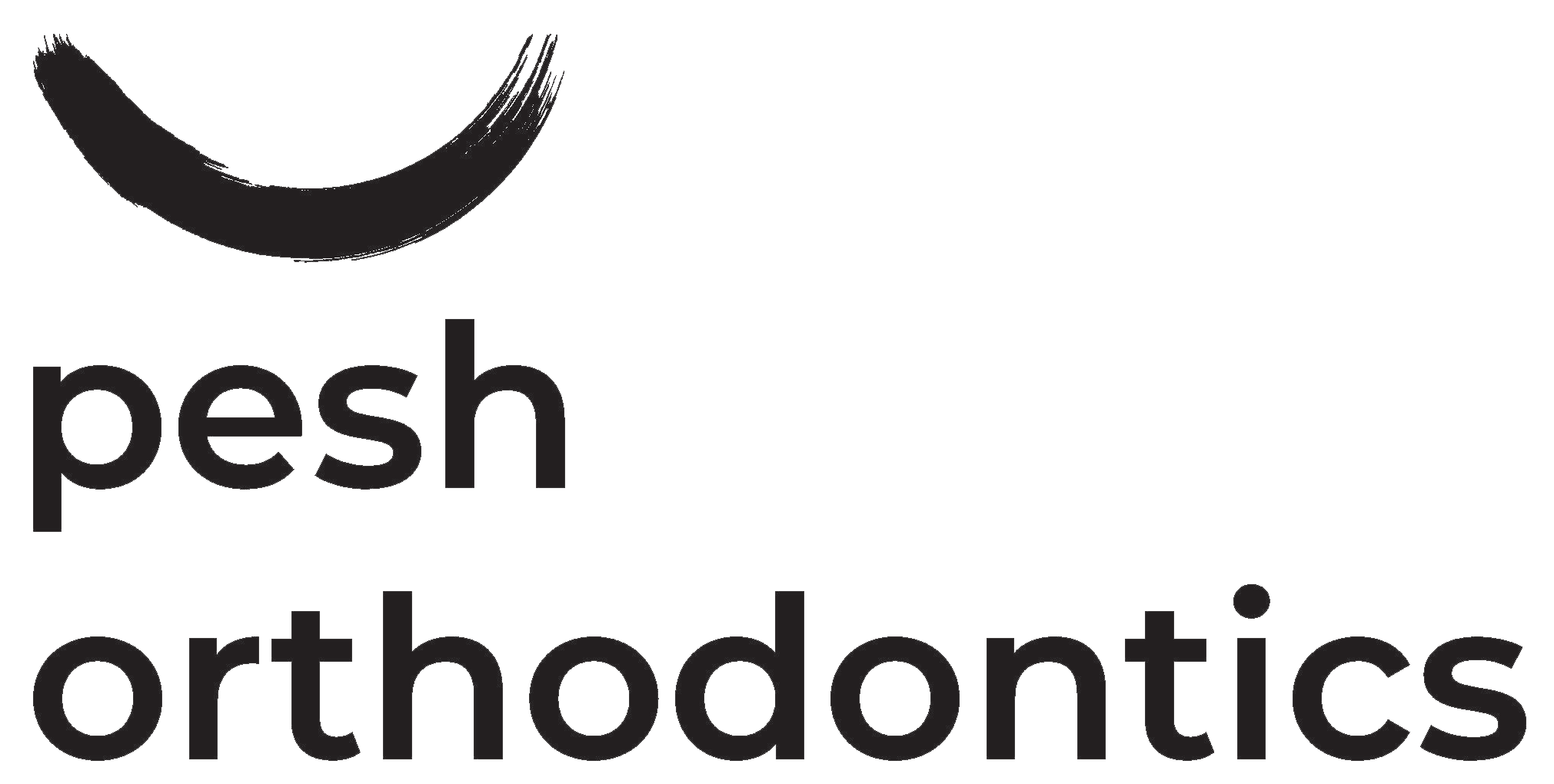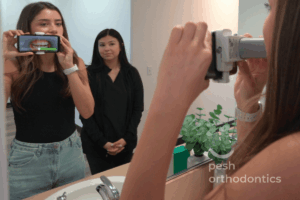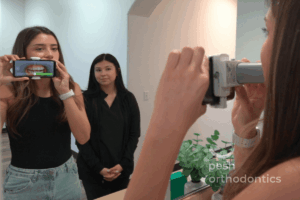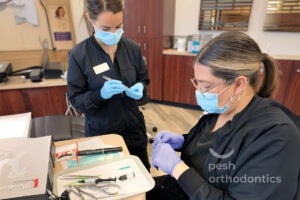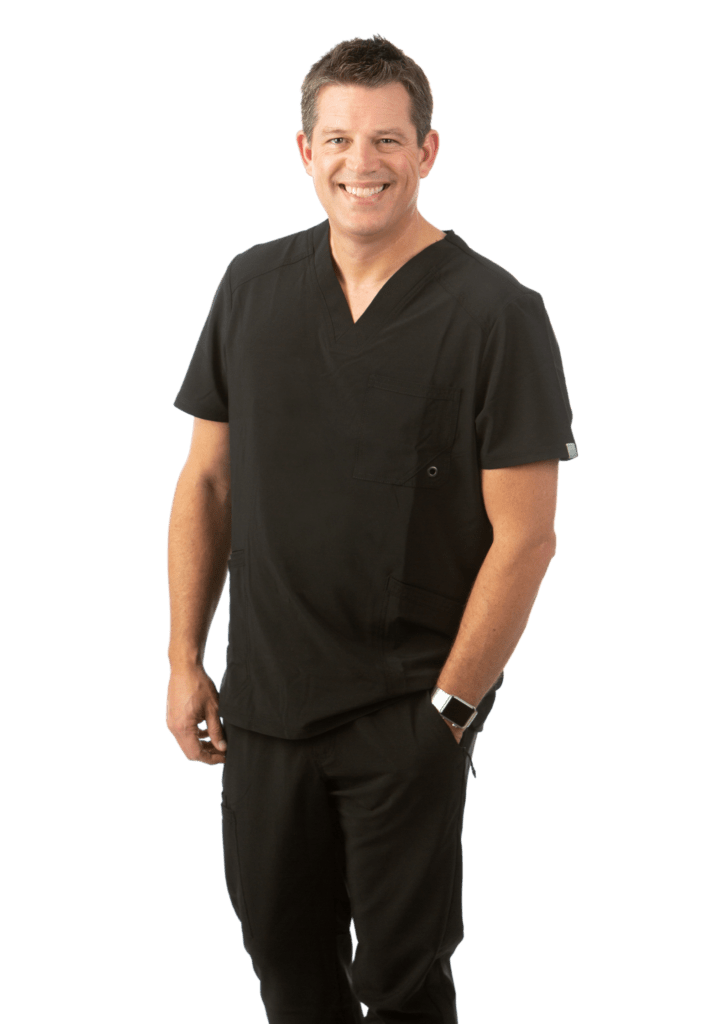Have you ever woken up feeling groggy despite a full night’s sleep? Or perhaps you’ve been told that you snore loudly or even stop breathing momentarily while asleep? These could be signs of a common yet serious sleep disorder known as sleep apnea. In the quest for better sleep and overall health, many are exploring alternative treatments beyond traditional methods like CPAP machines or surgery. Here at Pesh Orthodontics, we specialize in orthodontics—a field not just about straightening teeth, but also about improving overall oral health and, surprisingly, addressing sleep apnea. In this blog post, we’ll delve into how orthodontic treatments can potentially alleviate sleep apnea symptoms, offering you a path to a more restful and rejuvenating night’s sleep.
What is Sleep Apnea?
Sleep apnea is a sleep disorder characterized by pauses in breathing or shallow breaths during sleep. These pauses can last from a few seconds to minutes and may occur multiple times throughout the night. The most common type of sleep apnea is obstructive sleep apnea (OSA), where the airway becomes blocked or collapses during sleep, leading to disrupted breathing patterns.
Types and Symptoms:
- Obstructive Sleep Apnea (OSA): This occurs when the throat muscles relax excessively, blocking the airway.
- Central Sleep Apnea: This involves the brain failing to send signals to the muscles that control breathing.
- Mixed Sleep Apnea: This is a combination of both obstructive and central sleep apnea.
Symptoms of Sleep Apnea:
- Loud snoring: Often the most noticeable symptom, especially in obstructive sleep apnea.
- Pauses in breathing: Witnessed by a partner or family member.
- Excessive daytime sleepiness: Feeling tired or fatigued despite sufficient sleep.
- Morning headaches: Due to changes in oxygen levels during the night.
- Difficulty concentrating: Impairments in memory and cognitive function.
- Irritability and mood changes: Resulting from disrupted sleep patterns.
Untreated sleep apnea can lead to serious health issues such as high blood pressure, heart disease, stroke, and even diabetes. It’s important to recognize the symptoms and seek appropriate treatment to improve both sleep quality and overall health.
In the next section, we’ll explore the conventional treatments currently available for managing sleep apnea and their effectiveness.
Traditional Treatments for Sleep Apnea
When diagnosed with sleep apnea, individuals typically consider several treatment options, each with varying degrees of effectiveness and comfort. Here are the primary traditional treatments for managing sleep apnea:
- Continuous Positive Airway Pressure (CPAP) Therapy:
- Description: CPAP therapy involves wearing a mask over the nose and/or mouth during sleep. The mask is connected to a machine that delivers a continuous flow of air, keeping the airway open.
- Effectiveness: CPAP is highly effective in reducing sleep apnea symptoms when used consistently. It helps prevent pauses in breathing and alleviates snoring.
- Challenges: Some patients find CPAP masks uncomfortable or claustrophobic, leading to poor compliance. Mask leakage and dryness of the mouth or nose are common complaints.
- Oral Appliances:
- Description: Oral appliances, also known as mandibular advancement devices (MADs), are custom-made dental devices similar to mouthguards. They reposition the lower jaw and tongue to keep the airway open during sleep.
- Effectiveness: MADs are effective for mild to moderate obstructive sleep apnea. They can also be used for individuals who prefer an alternative to CPAP therapy.
- Challenges: The effectiveness of MADs can vary depending on the patient’s jaw structure and severity of sleep apnea. Regular dental check-ups are necessary to monitor oral health and device fit.
- Surgery:
- Description: Surgical procedures for sleep apnea aim to remove excess tissue from the throat or reposition the jaw to widen the airway. Types of surgery include uvulopalatopharyngoplasty (UPPP), genioglossus advancement, and maxillomandibular advancement (MMA).
- Effectiveness: Surgery can be effective for certain anatomical issues causing obstructive sleep apnea. It may provide a long-term solution in cases where other treatments have failed.
- Challenges: Surgery carries risks, including pain, bleeding, and potential complications. Success rates can vary depending on the specific procedure and patient characteristics.
- Lifestyle Changes:
- Description: Lifestyle modifications such as weight loss, avoiding alcohol and sedatives before bedtime, and sleeping on your side rather than your back can help reduce sleep apnea symptoms.
- Effectiveness: Adopting healthy habits can significantly improve sleep apnea severity, particularly in cases where weight is a contributing factor.
- Challenges: Lifestyle changes require commitment and may not completely eliminate sleep apnea symptoms, especially for moderate to severe cases.
Each treatment option has its advantages and considerations. In the following section, we’ll explore how orthodontic treatments, specifically tailored to address the underlying structural issues contributing to obstructive sleep apnea, can provide an alternative or complementary approach to traditional methods.
Role of Orthodontics in Treating Sleep Apnea
While traditional treatments like CPAP therapy and surgery have been mainstays in managing sleep apnea, orthodontics offers an alternative approach that focuses on addressing the underlying structural issues contributing to obstructive sleep apnea (OSA). Here’s how orthodontic treatments can play a significant role:
- Orthodontic Appliances:
- Mandibular Advancement Devices (MADs): These custom-made oral appliances resemble mouthguards and work by repositioning the lower jaw slightly forward during sleep. By doing so, MADs help keep the airway open and reduce obstruction caused by relaxed throat muscles.
- Effectiveness: MADs are particularly effective for mild to moderate cases of obstructive sleep apnea. They can significantly decrease snoring and improve nighttime breathing patterns.
- Patient Comfort: Compared to CPAP machines, many patients find MADs more comfortable and less intrusive during sleep.
- Palatal Expanders:
- Description: Palatal expanders are devices used to widen the upper jaw. By expanding the palate, more room is created for the tongue and alleviates overcrowding in the mouth, which can contribute to airway obstruction.
- Effectiveness: Palatal expanders are beneficial for patients with narrow upper jaws (palatal constriction) that contribute to sleep apnea symptoms. They can improve airflow and reduce the severity of obstructive events during sleep.
- Orthodontic Evaluation and Treatment Planning:
- Customized Approach: At Pesh Orthodontics, we emphasize a personalized approach to orthodontic care for sleep apnea. Our specialists conduct comprehensive evaluations to assess the underlying structural issues contributing to sleep apnea.
- Advanced Technology: Utilizing state-of-the-art imaging and diagnostic tools, we create customized treatment plans tailored to each patient’s unique needs and severity of sleep apnea.
- Collaboration with Sleep Medicine Specialists:
- Multidisciplinary Care: We work closely with sleep medicine specialists to ensure a holistic approach to treating sleep apnea. Collaboration allows us to address both the dental and medical aspects of the condition, optimizing treatment outcomes for our patients.
- Continuous Monitoring: Throughout the treatment process, we monitor progress closely and make necessary adjustments to orthodontic appliances to ensure effectiveness and patient comfort.
- Benefits Beyond Sleep Apnea:
- Improved Oral Health: Orthodontic treatments not only improve breathing and sleep quality but also contribute to better oral health overall. By correcting dental misalignments and jaw irregularities, orthodontics can prevent future dental issues and enhance overall well-being.
In the next section, we’ll explore the specific benefits of choosing orthodontic treatments at Pesh Orthodontics] for managing sleep apnea, including success stories and patient testimonials.
Benefits of Orthodontic Treatment for Sleep Apnea
Choosing orthodontic treatment for managing sleep apnea offers several unique advantages that may appeal to patients seeking alternatives to traditional therapies. Here are the key benefits:
- Non-Invasive Approach:
- Orthodontic treatments like mandibular advancement devices (MADs) and palatal expanders offer non-surgical and non-pharmacological alternatives to managing sleep apnea. This appeals to patients who prefer to avoid invasive procedures or cumbersome CPAP machines.
- Improved Comfort and Compliance:
- Many patients find orthodontic appliances, such as MADs, more comfortable and easier to tolerate compared to CPAP masks. This can lead to better compliance with treatment recommendations and improved long-term outcomes.
- Customized Treatment Plans:
- At Pesh Orthodontics, orthodontic treatment plans are tailored to each patient’s specific needs. Through advanced imaging and diagnostic tools, our specialists identify underlying anatomical issues contributing to sleep apnea and develop personalized solutions.
- Effectiveness in Mild to Moderate Cases:
- Orthodontic appliances have shown effectiveness in managing mild to moderate obstructive sleep apnea. By addressing the structural causes of airway obstruction, these treatments can reduce snoring and improve nighttime breathing patterns.
- Comprehensive Oral Health Benefits:
- Orthodontic treatment not only improves respiratory function but also enhances overall oral health. By correcting dental misalignments and jaw irregularities, orthodontics can prevent issues such as tooth decay, gum disease, and temporomandibular joint (TMJ) disorders.
- Collaboration with Sleep Medicine Specialists:
- Our practice collaborates closely with sleep medicine specialists to ensure comprehensive care for patients with sleep apnea. This multidisciplinary approach ensures that both the dental and medical aspects of sleep apnea management are addressed effectively.
- Long-Term Solution:
- For many patients, orthodontic treatment provides a sustainable long-term solution to sleep apnea. By improving airflow and reducing airway obstruction, these treatments can lead to significant improvements in sleep quality and overall health.
In the next section, we’ll delve into a case study or patient story to illustrate the positive impact of orthodontic treatment for sleep apnea at Pesh Orthodontics. This real-world example will showcase our expertise and success in helping patients achieve better sleep and enhanced quality of life.
Case Study: Real-Life Impact of Orthodontic Treatment for Sleep Apnea
At Pesh Orthodontics, we have witnessed firsthand the transformative effects of orthodontic treatment on patients struggling with sleep apnea. One such inspiring case is that of Sarah, a 42-year-old marketing executive who came to us seeking relief from chronic snoring and daytime fatigue.
Background: Sarah had been experiencing loud snoring for several years, often waking up feeling unrested despite seemingly adequate sleep. Concerned about her health and productivity, she underwent a sleep study which confirmed a diagnosis of moderate obstructive sleep apnea.
Treatment Journey: Upon visiting our practice, Sarah underwent a comprehensive evaluation by our orthodontic specialists. It was determined that Sarah’s sleep apnea was exacerbated by a narrow upper jaw, which contributed to airway obstruction during sleep.
Orthodontic Solution: Sarah opted for a palatal expander—a custom-made device designed to gently widen the upper jaw over time. This treatment aimed to create more space in her mouth, alleviating the crowding that contributed to her sleep apnea symptoms.
Results: After several months of wearing the palatal expander as part of her orthodontic treatment plan, Sarah began noticing significant improvements in her sleep quality. Her snoring reduced noticeably, and she reported feeling more rested and alert during the day. Follow-up sleep studies indicated a decrease in the frequency and severity of sleep apnea events.
Quality of Life Improvements: With her sleep apnea under better control, Sarah experienced a positive ripple effect in her overall health and well-being. She felt more energetic at work, enjoyed improved concentration, and felt more engaged in social activities without the embarrassment of disruptive snoring.
Conclusion: Sarah’s success story highlights the potential of orthodontic treatments, such as palatal expanders, in effectively managing sleep apnea. At Pesh Orthodontics , we are committed to providing personalized care and innovative solutions that not only address the symptoms of sleep apnea but also enhance our patients’ quality of life.
In conclusion, if you or someone you know is struggling with sleep apnea, consider exploring orthodontic treatments as a viable option. Contact [Your Practice Name] today to schedule a consultation and discover how we can help you achieve better sleep and overall health.
Next, we’ll wrap up with a call to action and provide readers with information on how they can reach out to your practice for more information or to book an appointment.
Conclusion
Orthodontic treatment represents a promising avenue for individuals seeking effective solutions to manage sleep apnea. By addressing underlying structural issues that contribute to airway obstruction, orthodontic appliances like mandibular advancement devices (MADs) and palatal expanders offer non-invasive alternatives to traditional therapies such as CPAP machines or surgery. At [Your Practice Name], we specialize in providing personalized care that focuses on improving both oral health and overall well-being.
Through collaboration with sleep medicine specialists and utilizing advanced diagnostic tools, we develop customized treatment plans tailored to each patient’s unique needs. Our goal is not only to alleviate sleep apnea symptoms but also to enhance sleep quality and promote long-term health benefits.
